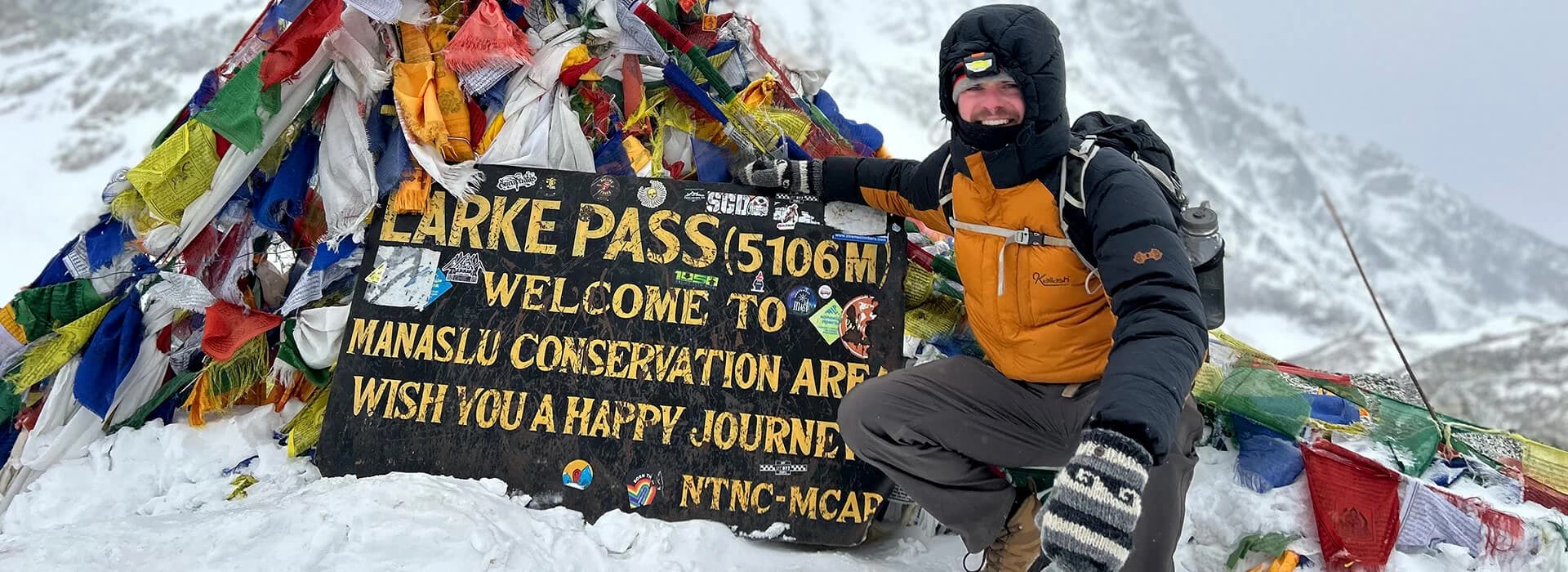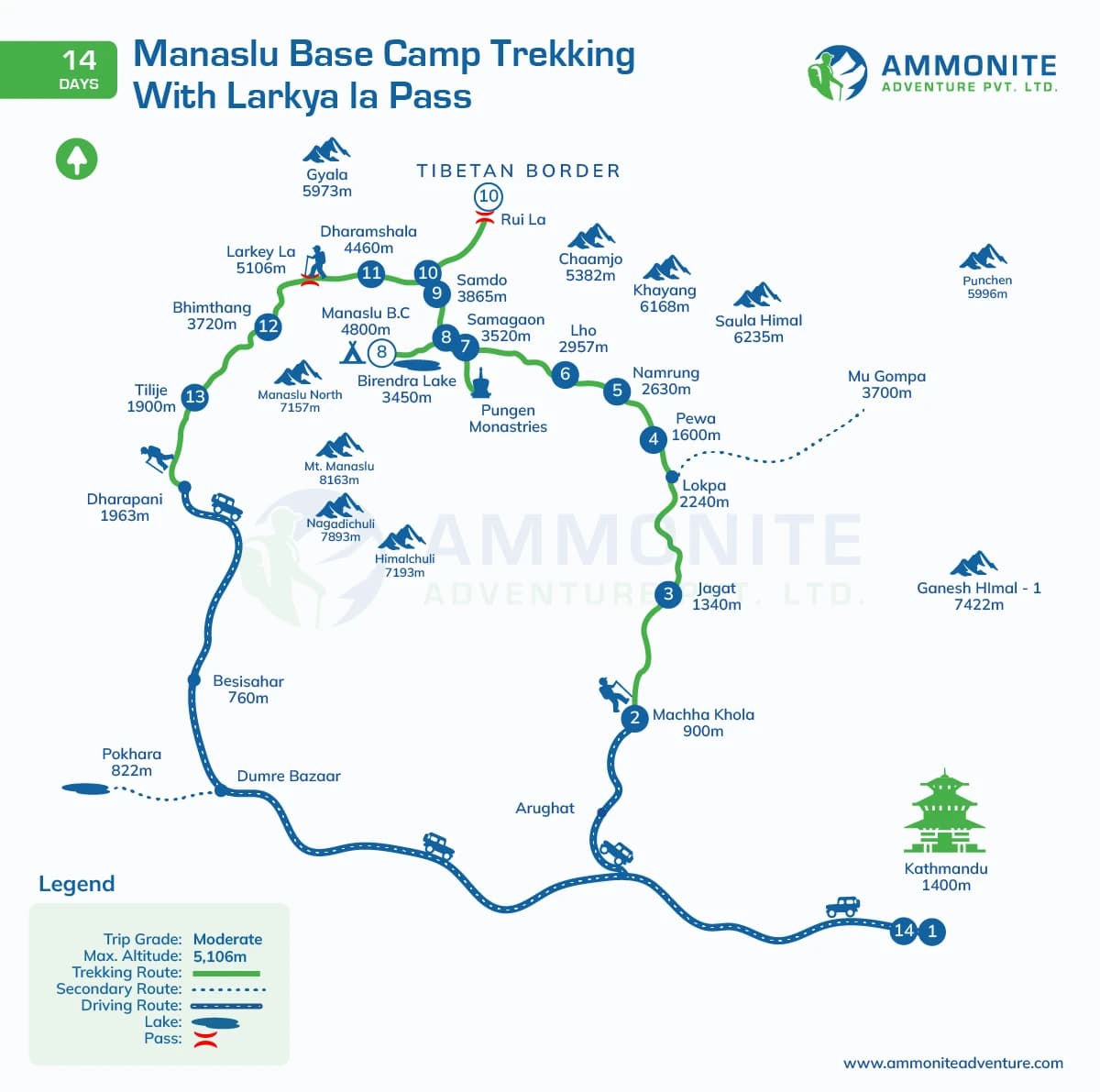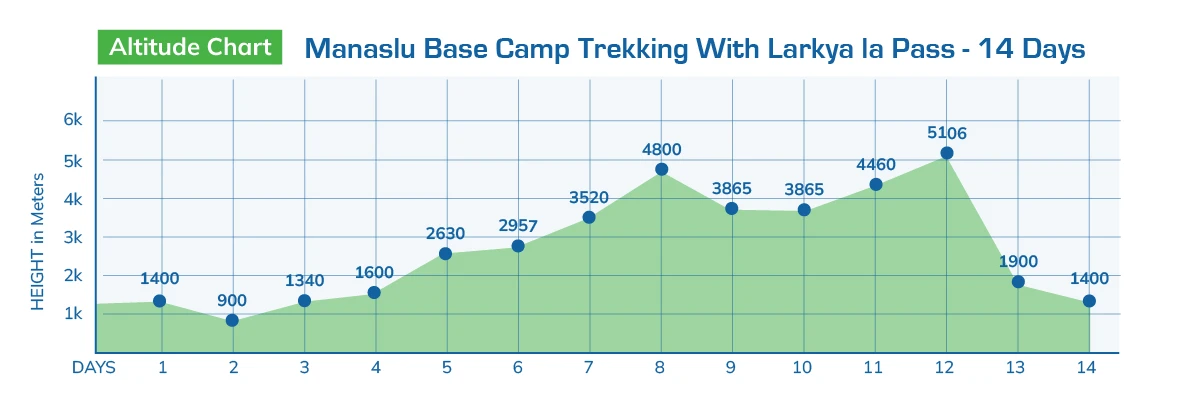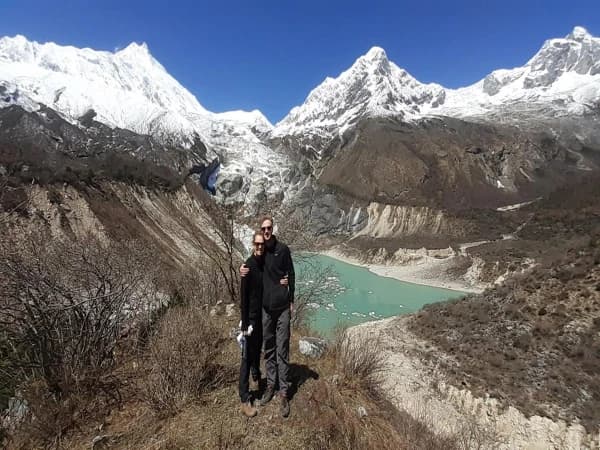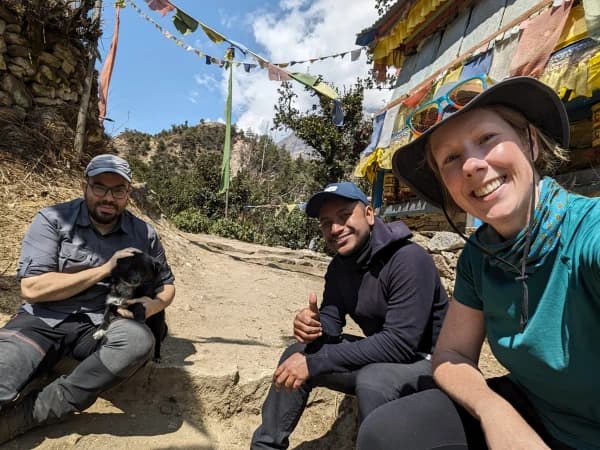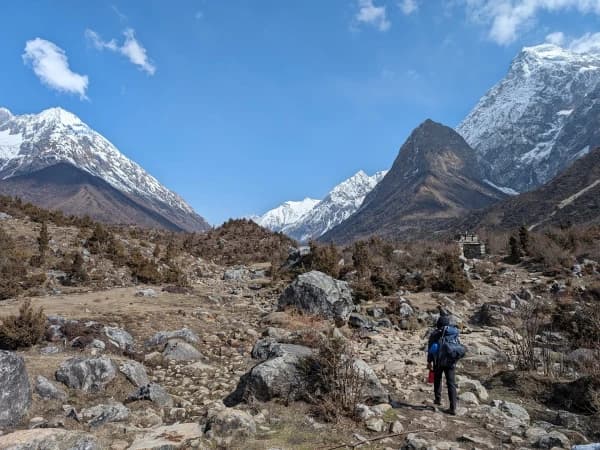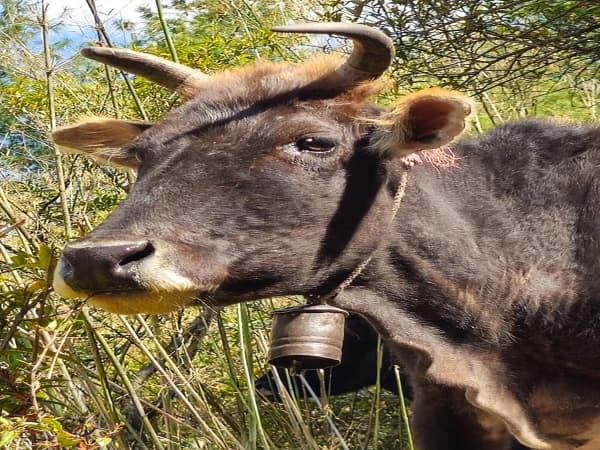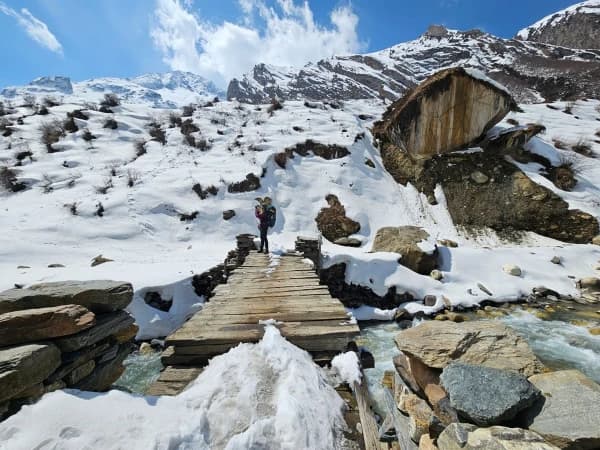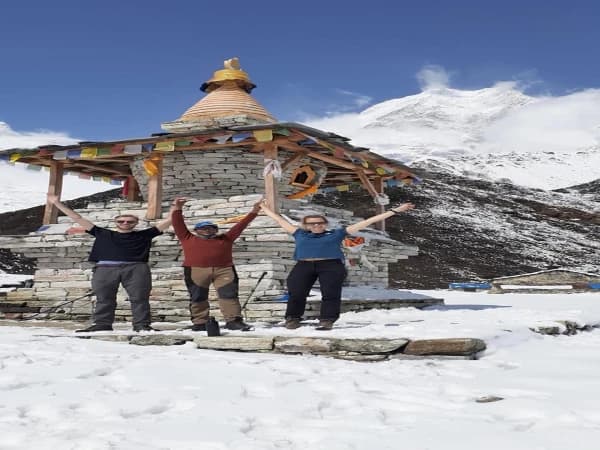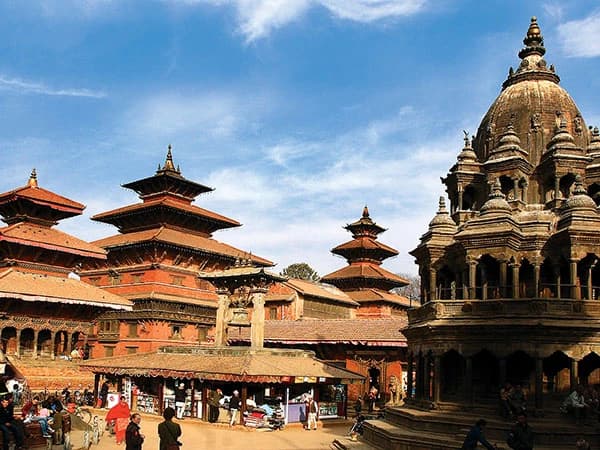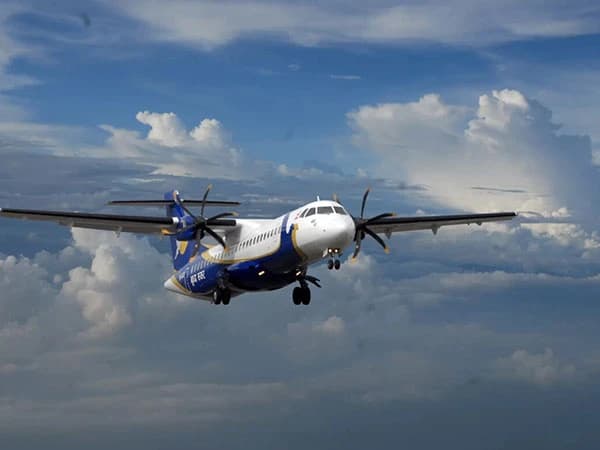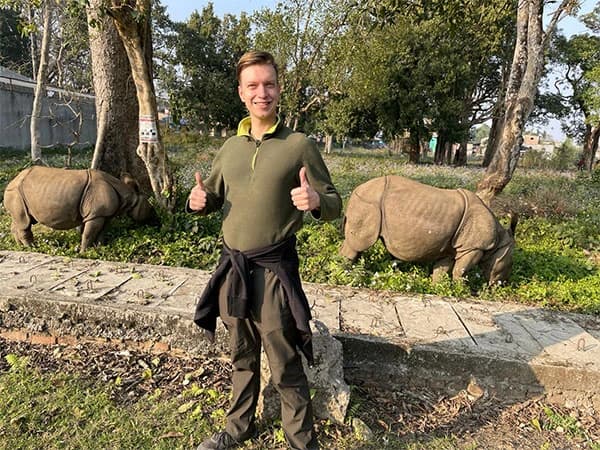The Manaslu Base Camp Trek with Ammonite Adventure was the finest I’ve had. It’s a very well organized trek and
Manaslu Base Camp Trekking with Larkya La Pass is a magical trek in which we travel to Nepal's far away and culturally rich Manaslu region. Adventurers tap into traditional Tibetan-influenced villages with a slice of challenging terrains and killer mountain vistas.
Manaslu Base Camp Trekking With Larkya la Pass 14 Days Trip Overview
The 14 Days Manaslu Base Camp Trekking With Larkya la Pass trail commences at Soti Khola, heading semi-circle along the Budhi Gandaki River with dense forests, terraced fields and many suspension bridges. With Mount Manaslu (8,163 m) towering above you, trekkers pass from subtropical forests and alpine meadows as they ascend. This awesomely awe-inspiring peak, the eighth highest in the world, is up close at Manaslu Base Camp (4,665 meters), and the journey there gives you an up-close view.
A big highlight of the Manaslu Base Camp Trekking With Larkya la Pass is crossing the Larkya La Pass at 5,106 meters. For views of the Himalayas, it’s renowned for Himlung Himal, Annapurna II and Kang Guru, among others. The crossing involves steep ascents. However, the views from the summit are worth it.
The 14 Days Manaslu Base Camp Trek With Larkya la Pass isn't just stunning scenery. Its monasteries, Mani walls and chortens give cultural immersion in villages such as Samagaon and Samdo. These villages remain a testament to the area’s Tibetan Buddhist heritage. Interacting with the locals means we can interact with their culture, custom and, yes, their hospitality.
The region of Manaslu is a conservation area and embraces the diversity of flora and fauna, including rhododendron forests, which brilliantly bloom in spring. Being away from the usual backpacker destinations, such as the Annapurna Circuit, means that Trekking in this region is relatively solitary and not as commercialized.
Highlights of 14 Days Manaslu Mountain Base Camp Trekking
- View an unforgettable panorama of Mt. Manaslu (8,163m), the world’s eighth-highest peak, and other famous mountains.
- Cross the tricky Larkya La Pass at 5,106 feet, often one of the highest passes in the Himalayas.
- Travel through subtropical forests, terraced fields, glacial zones and more in all, a representation of Nepal’s ecological diversity.
- See traditional villages with Tibetan-influenced cultures and ancient monasteries in the company of local people.
- There is the chance to reach the base camp of Mt Manaslu and to get very close to the peak with close-up views and an understanding of the mountaineering world.
- Trek to a less crowded trial than other Nepalese treks, which makes it the perfect, serenely authentic adventure.
- In the Manaslu Conservation Area, there are diverse flora and fauna, including dangerously rare species, like the endangered snow leopard.
Advantages Of Manaslu Base Camp Trekking 14 Days With Ammonite Adventure
- Expert Local Guidance: We take you safely on a respectful trek under the supervision of experienced local guides and porters from the Manaslu region.
- Personalized Pre-Trek Support: Get the full online briefing ahead of time, including a detailed briefing by Krishna B. Pariyar, personally tailored to your preferences.
- Guaranteed Departures: Don't worry; your trek is guaranteed to depart 100%.
- 24/7 Assistance: Get round-the-clock support on Email, WhatsApp, Viber, iMessage, Zoom, Telegram or call +9851230809.
- Flexible Payment Options: You will enjoy safe, easy, and smooth payments.
- High-Quality Complimentary Gear: At no extra cost, you'll receive branded trekking essentials, including sleeping bags, down jackets, and trekking poles.
- Free Luggage Storage: Trek with us knowing that you can safely store your excess luggage for up to 14 days at NO CHARGE.
- Maps and Souvenirs Included: As a part of your trekking package, you will be provided with a detailed Manaslu Base Camp with Larkya La Pass Trekking map, a company T-shirt and a duffle bag.
- Emergency Support: Be able to access basic medical supplies to help you with many minor health issues while on the trek.
- Small Group Adventures: Join a group of 2-8 people to trek and make better friends while experiencing a more enriching journey. Note: Solo trekking is not allowed.
What Is Manaslu Base Camp Height?
At an elevation of approximately 4,800 meters (15,748 feet) above sea level, Manaslu Base Camp is also the main staging point for climbers wanting to summit Mount Manaslu, the 8,163-meter (26,781-foot) 8th-highest peak in the world. Treks usually begin at altitudes of around 730 m (2,395 ft) in the subtropical foothills of Nepal from the base camp approach starting in Soti Khola.
Within the course of trekkers ascending, they pass through temperate and alpine climatic zones to arctic conditions characteristic of the base camp altitude.
The Manaslu Base Camp Height itself is situated among rugged terrains along with high peaks and glaciers associated with a high-altitude environment. That type of setting can be faced with decreased oxygen and low temperatures, which both climbers and trekkers must adequately prepare for. There are several higher camps from the base camp to ascent towards the summit of Mount Manaslu. This includes:
- Camp I: At an elevation of around 5,600 meters (18,373 feet).
- Camp II: Some 6,300 meters (20,669 feet) high.
- Camp III: Roughly about 6,900 meters (22,638 feet).
- Camp IV: Closer to 7,300 meters (23,950 feet).
Are Manaslu Base Camp Trek and Manaslu Circuit Trek in Nepal Different?
Manaslu Base Camp Trekking is the same as Manaslu Circuit Trekking in terms of destinations, scenery, and experience. Though the names vary, the itineraries tend to be similar, with similar routes covered and spectacular Himalayan landscapes visible along the way. In fact, many trekking agencies merge these as the same trek. At the same time, some agencies do not include the trip to Manaslu Base Camp in their standard Manaslu Circuit Treks itineraries to cut costs and shorter trekking days.
Ammonite Adventure is different; it puts the customer first and makes sure that every trekker gets the best service. To make it possible for trekkers to see this iconic place without much additional hassle, we also include a day hike from Samagaon to Manaslu Base Camp. For most, it's not feasible to camp at the base camp, so trekkers return overnight to Samagaon. Samagaon is the last densely populated village, and thus, it is a good place to stay to explore the region.
Is Manaslu Mountain Base Camp Hike An Off-Beaten Restricted Trekking Trail in Nepal?
The Manaslu Mountain Base Camp Hike is Off-Beaten Restricted Trekking Trail in Nepal. Being a restricted area, trekkers are required to obtain a few permits to get into this region.
The Manaslu Restricted Area Permit (RAP) is needed and costs change during the season. The fee is USD 100 from September to October and USD 15 per day from September to November for the first seven days and each additional day. It’s USD 75 for the first seven days, plus USD 10 for each additional day from December to August.
14 Days Manaslu Base Camp Trek With Larkya la Pass Trekkers also need the Manaslu Conservation Area Permit (MCAP) and the Annapurna Conservation Area Permit (ACAP) for foreign national NPR 3000 and SAARC nationals NPR 1000.
Mountain Views on the Manaslu Base Camp Trek With Larkya la Pass 14 Days Itinerary
The 14 Days Manaslu Mountain Base Camp Trekking will be the ideal travel for trekkers to learn about the Manaslu Circuit trek and experience all the beauty of the base camp and views while crossing the Larkya La Pass. The peaks here offer some of the most awesome views that you could imagine.
Throughout the trek, you'll encounter:
- Mount Manaslu (8,163 meters/26,781 feet): Standing this high, it's visible from Samagaon, and during ascent to base camp, it is the world's eighth-highest mountain.
- Himalchuli (7,893 meters/25,896 feet):On route, its impressive presence can be seen particularly near Lho village.
- Ngadi Chuli (7,871 meters/25,823 feet): Peak 29 (also known as) becomes visible as you climb above the higher altitudes of the trek.
- Himlung Himal (7,126 meters/23,379 feet):Grest view from the Larkya La Pass.
- Cheo Himal (6,820 meters/22,375 feet): The best views of its snowclad peaks are from the Larkya La pass.
- Kang Guru (6,981 meters/22,904 feet): Adding another coating to the Himalayan backdrop, visible from the Larkya La Pass.
- Annapurna II (7,937 meters/26,040 feet):One can bask in the glory of the Annapurna range at the Larkya La Pass.
The main highlight is crossing the Larkya La Pass at 5,106 meters (16,752 feet) with views of these peaks and the landscape beyond.
Manaslu Base Camp Trek With Larkya la Pass Cost 2026 and 2027
The Manaslu Base Camp Trek with Larkya La Pass is an affordable personalized trekking experience in small groups that we offer from 2026 and 2027. Our prices are tailored based on the group size:
| Group Size | Price |
| 2 persons | $955/P |
| 3-5 persons | $899/P |
| 6-8 persons | $835/P |
| 9-10 | $785/P |
| 11-15 | $750/P |
We organize small trekking and tour groups, usually with 8 travelers. And we will be able to provide them with personalized attention, professional guidance and personal assistance during the complete trek. The remote and memorable trek from the base of the grand Manaslu region to the adventurous Larkya La Pass. Added flexibility means our small group sets the stage for a more enjoyable personal adventure.

